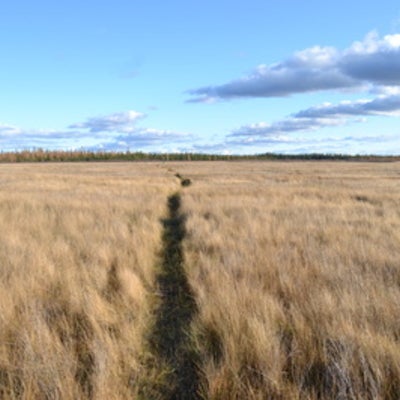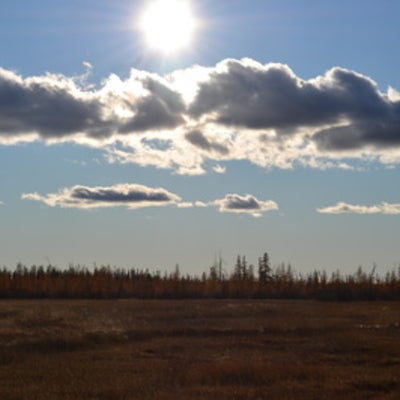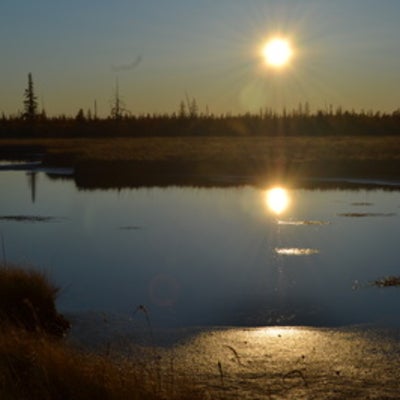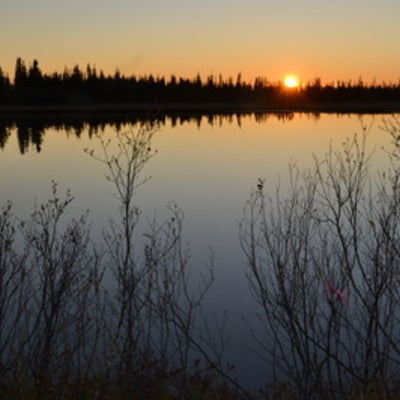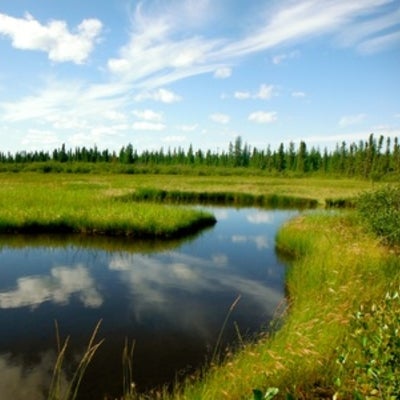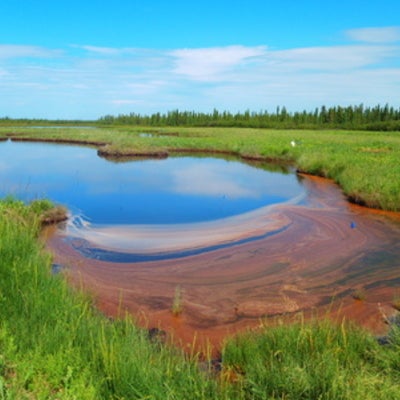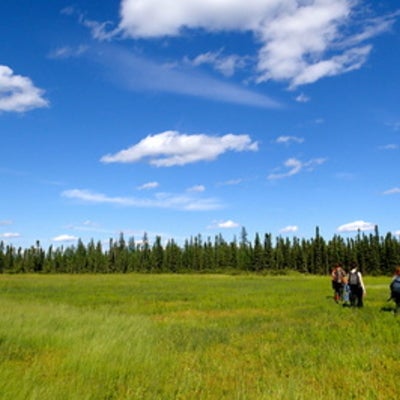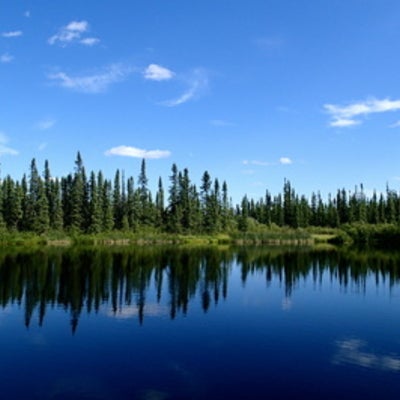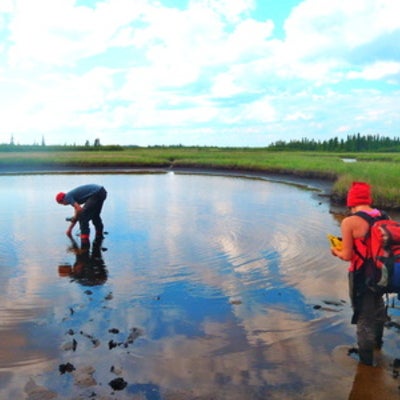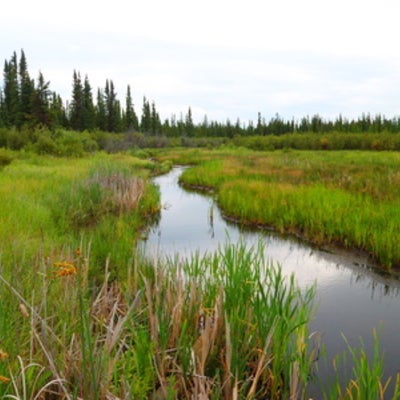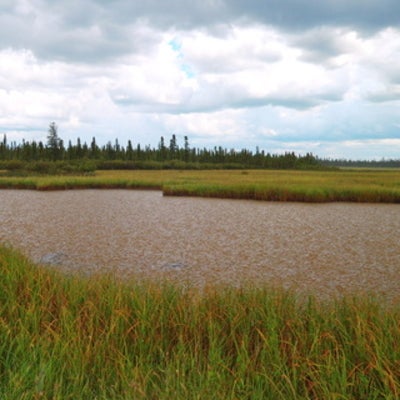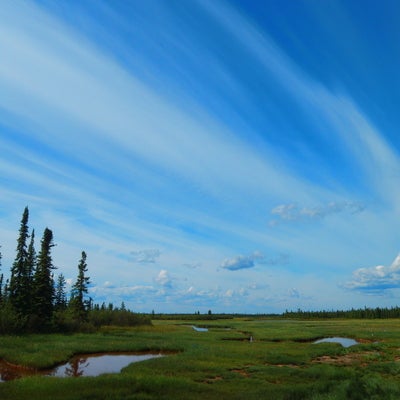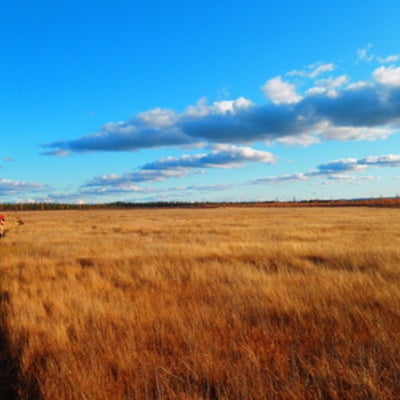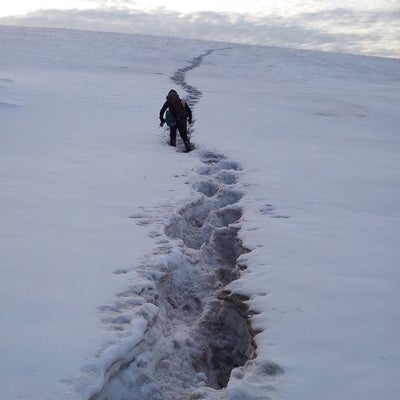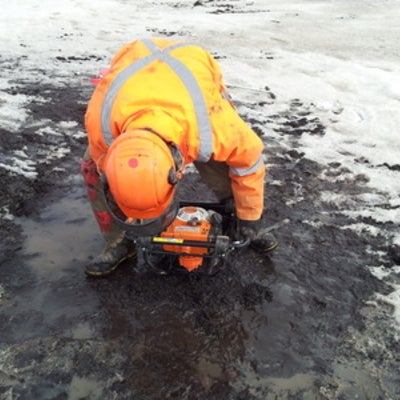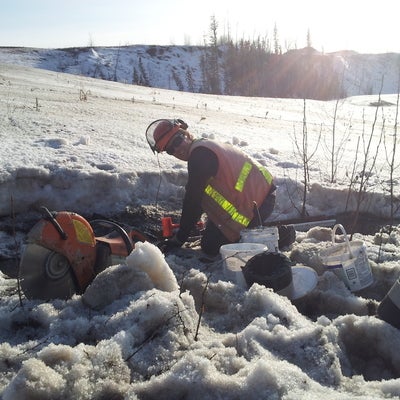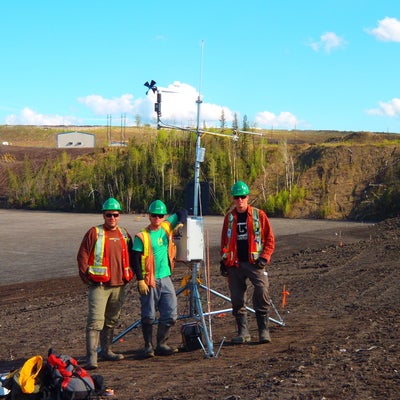Fen creation is a largely new concept, and designing a fen and its watershed is largely untested. Our goal is to create a self-sustaining ecosystem that is carbon-accumulating, capable of supporting a representative assemblage of species and resilient to normal periodic stresses. In addition to assisting Suncor Energy comply with its legal obligation to reclaim fens in the post-mined landscape, this research is essential to understanding design implications and to the development of more optimal designs and cost-effective protocols. It is training highly qualified personnel and developing fundamental and applied knowledge in fen hydrology, bio-geochemistry and ecology.
Our fen is designed to be self-contained (requiring no managed water supply); a Hydrogeosphere numerical model of the coupled fen-upland system provided suggestions for requisite materials based on their hydraulic properties and geometric configuration (example given; slope, thickness, et cetera). The system has been designed with a low permeability "liner" is placed over the target site, with a low gradient slope, tailings sand used to form the aquifer system, overlying the liner. At the lower end of the system, donor peat materials are placed over the sand and coke under-drain aquifer to form the fen. The upland area, which contributes groundwater to the fen, is covered with an Lfh soil horizon (e.g. boreal forest soils) and re-vegetated primarily with ericaceous shrubs and a sparse cover of native tree species ranging from tamarack and black spruce near the fen, to jack pine at the uppermost part of the upland.
Our fen is designed to be self-contained (requiring no managed water supply); a Hydrogeosphere numerical model of the coupled fen-upland system provided suggestions for requisite materials based on their hydraulic properties and geometric configuration (example given; slope, thickness, et cetera). The system has been designed with a low permeability liner is placed over the target site, with a low gradient slope, tailings sand used to form the aquifer system, overlying the "liner". At the lower end of the system, donor peat materials are placed over the sand and coke under-drain aquifer to form the fen. The upland area, which contributes groundwater to the fen, is covered with an Lfh soil horizon (example given; boreal forest soils) and re-vegetated primarily with ericaceous shrubs and a sparse cover of native tree species ranging from tamarack and black spruce near the fen, to jack pine at the uppermost part of the upland.
The fen project is allowing for evaluation of the success of the design, including:
- materials type and placement
- its ability to deliver water of adequate quality to a built-system
- the method of re-vegetation
- the appropriate fen plant and microbial species
- how these contribute to the accumulation of carbon in the system
In evaluating the success of the constructed Nikanotee fen design, a number of reference sites to the south and north of Nikanotee have been assessed since 2011 to understand what type of ecosystem the Nikanotee fen may develop into, the characteristics of these natural sites and how results seen in the constructed system reflect real, localised fen systems. These sites comprise of an incredibly saline fen, a rich fen known as poplar fen and a poor fen system known as pauciflora.
Selected publications
- Elmes, M. and Price, J.S. (2019). Hydrologic function of a moderate-rich fen watershed in the Athabasca Oil Sands Region of the Western Boreal Plain, northern Alberta. Journal of Hydrology, 570, 692-704
- Kessel, E.D, Ketcheson, S.J. and Price, J.S. (2018). The distribution and migration of sodium from a reclaimed upland to a constructed fen peatland in a post-mined oil sands landscape. Science of the Total Environment, 630, 1553-1564
- Simhayov, R.B, Weber, T.K.D and Price, J.S. (2018). Saturated and unsaturated salt transport in peat from a constructed fen. SOIL, 4(1), 63-81
- Ketcheson, S.J, Price, J.S, Sutton, O, Sutherland, G, Kessel, E and Petrone, R.M. (2017). The hydrological functioning of a constructed fen wetland watershed. Science of the Total Environment, 603, 593-605
